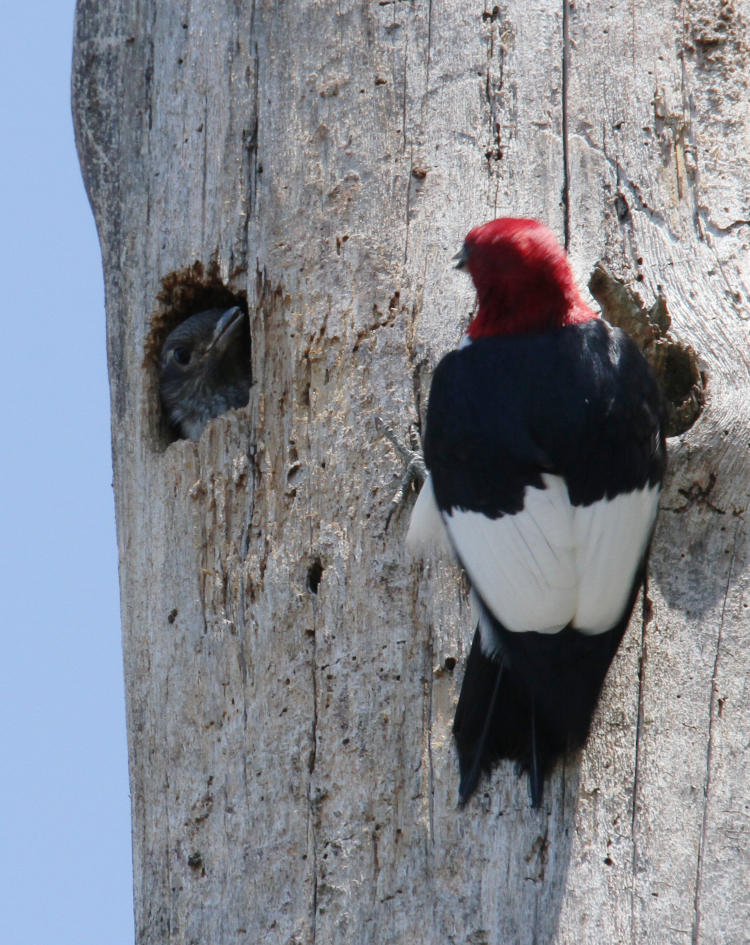
Given the success of previous efforts and the fact that I had the opportunity to pursue such actions, I’ve been making more trips down to Jordan Lake to try and keep an eye on the red-headed woodpecker (Melanerpes erythrocephalus) nest. It hasn’t been daily, nor for more than a couple hours at a time (mostly,) due to storms and heat and, you know, having a life. But this is something that I’ve been aiming to do, really, since I got serious about nature photography; it takes close attention and a lot of time to capture specific behaviors and events, and I’ve primarily been somewhere between, “catch something through sheer luck,” and, “wait around a bit, as long as it’s convenient,” and it was time for things to be a bit less convenient.
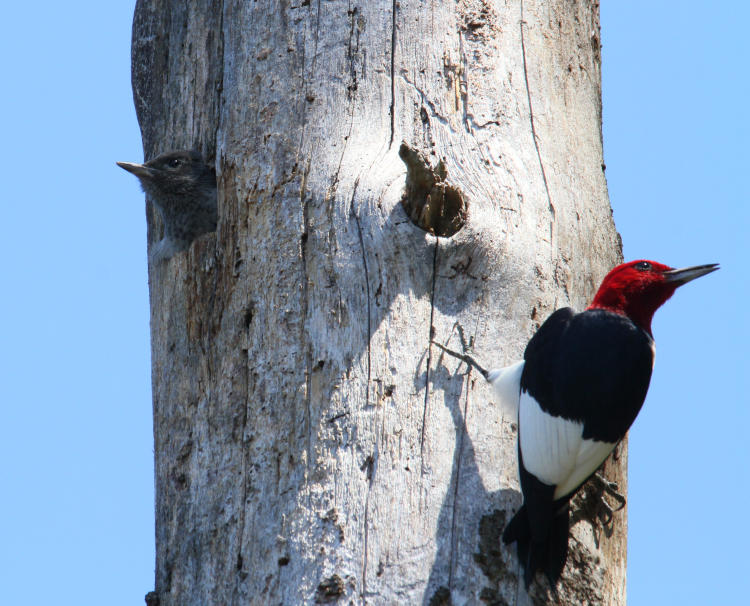
I was lucky in finding a nest that allowed good visibility with the long lens, as well as being able to hear the young, while still being far enough away that the adults weren’t spooked by my presence, especially since I had to be right out in the open for a decent perspective. True, it meant being knee-deep in the lake for these shots, but see the domain name; this is routine anyway.
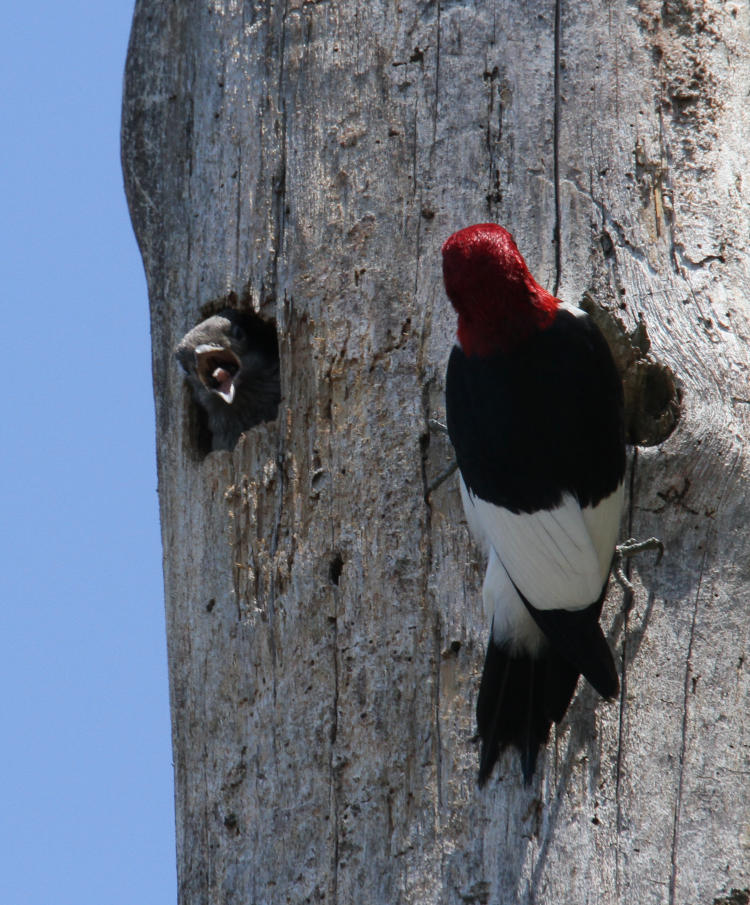
The sun would rise almost dead behind the nest opening, though shrouded by the treeline of the forest canopy that the host tree borders, and as the sun progressed it would throw differing light on the nest, necessitating changes of position depending on the time of day. Before noon, I was often having to work in open shade, but I knew that more activity would take place not long after sunrise than when closing on sunset, even though the light was the best then.
Based on appearance and behavior, the young would be leaving the nest any day now – the question was how they’d do it, or what kind of warning they’d provide. Previous experience with songbirds like wrens and chickadees told me that the young would bail without really having a grip on controlled flying, managing an arrested descent down to the ground before mastering the finer points over the next few hours. This tree, however, was literally standing in the water, and anyway these were woodpeckers, so what was going to happen? I really wanted to find out.
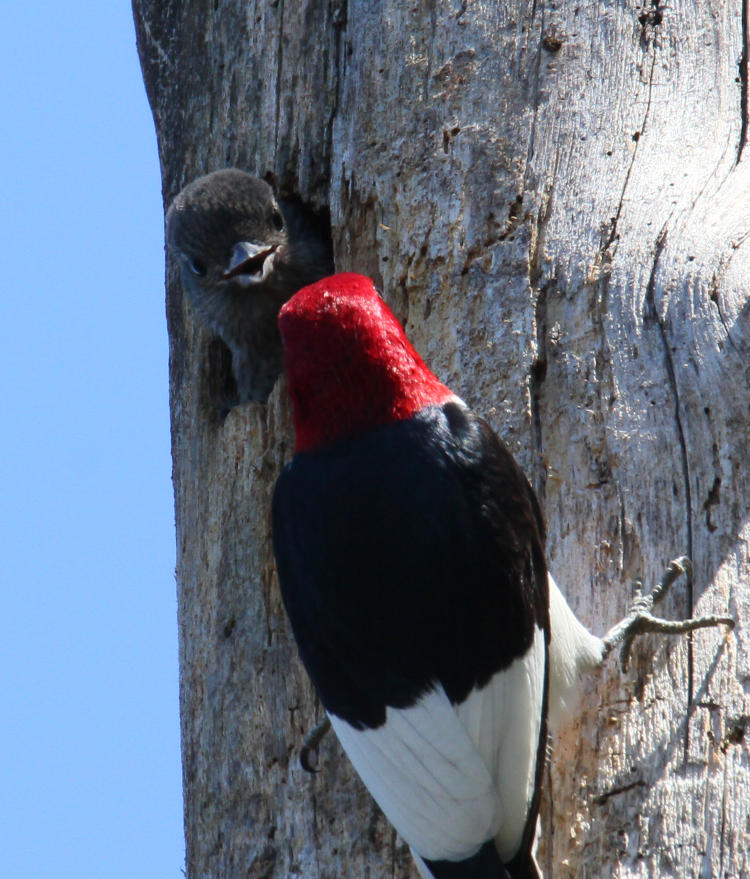
Gotta love the expression here. A friend recently commented about how many frames I took of the same subject, but this is why: it sometimes means capturing that key frame that only exists for a moment. I can easily discard those that didn’t work, or are mere duplicates.

This is from the previous day, later in the afternoon, but well-lit and a great illustration. Video, of course, does better, and you had to know we were getting to that.
[I apologize for a couple of the transition errors in there, but it takes better than two hours to render and I’m not redoing it right this moment. If you’re failing to see them, it either means that I’ve gone back since and replaced the video, or you’re not paying attention…]
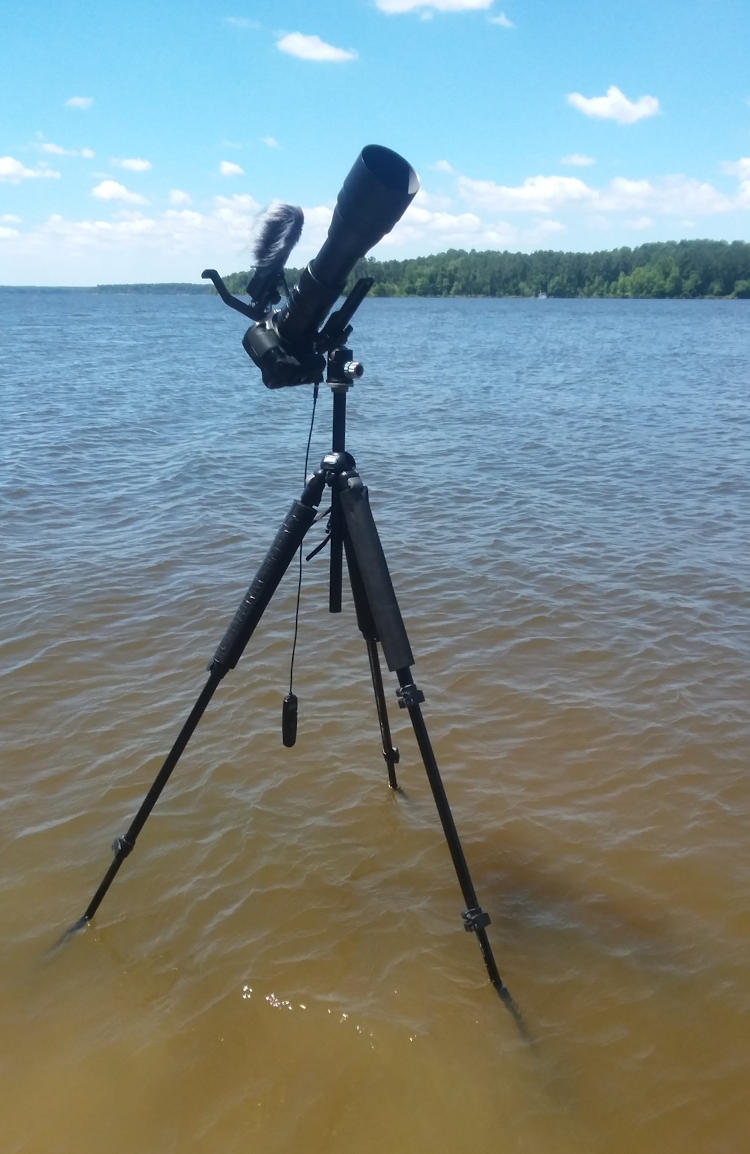
This is the video setup, sans the stabilizing arm which came the next day, but showing the shooting position (this angle was a little shallower than others) and the microphone with the ‘dead cat’ wind screen – you can even see why it was necessary. The hanging wire is the remote (which stupidly works only for still photos,) used to try and keep my hands from vibrating the rig. Yes, I realize that raising the center column this way increases the vibration, but I had to frame with the LCD on the back of the camera and I’m not that short – using it lower would mean squatting down to frame and dragging my ass in the water, something I’m not averse to unless I’m wearing the camera bag (spare batteries, cards, and lenses) and the long lens case, which I was. That other little arm up top, by the way, is a V-bracket for the microphone, because for unknown reasons so many manufacturers put the hot-shoe mounting plate centered on their devices – good for balance, which is unnecessary for a device weighing a crummy 160 grams, and bad for putting your eye up to the viewfinder, so it has to be raised out of the way. The mic is a Takstar SGC-598, and a pretty slick performer for the trivial cost; you can easily pay ten times the price for other brands.
Oh, yeah, the eagle:
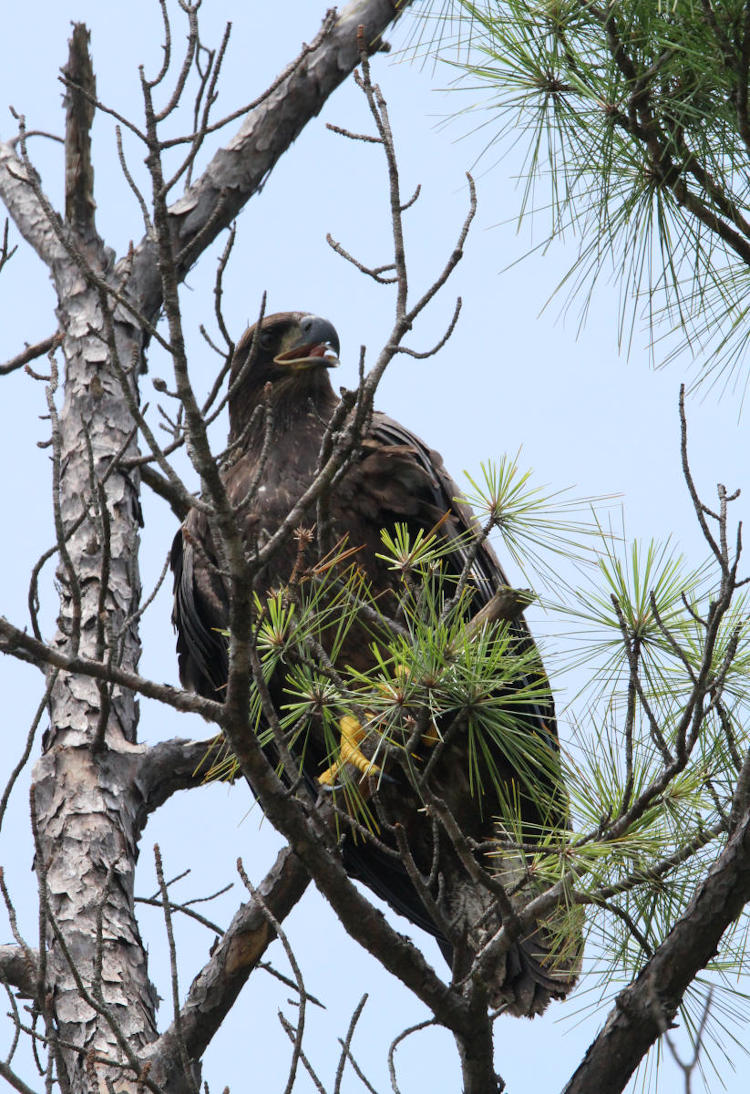
As I said in the video, this is a juvenile bald eagle (Haliaeetus leucocephalus,) almost certainly this year’s brood – I never got a broadside view to confirm from the coloration. What possessed it to home in right to this spot, when I was plainly visible, I’ll never know, but the next image might give a clue.

C’mon, that pose and light angle? That’s mugging for the camera. This is easily the closest that I’ve been to a wild eagle, and I was hoping that a parent might come by with some food, even though it hardly seems necessary. But hey, I’m cool with what I got. This is full frame at 600mm (I was backed off slightly for the previous image,) and like I said, 12 meters or so off? It’s hard to judge accurately when looking upwards.

And the great blue heron (Ardea herodias,) another juvenile. There were a pair of them flitting back and forth in the immediate area for a short while, often getting chased off by adults who had already claimed that territory, but I couldn’t swing the camera around for video of that.

This is the first fledgling to leave, probably only minutes or less before it occurred (the video timestamps aren’t parsed accurately by my system, for some reason.) It’s 7:09 AM, the sun still well below those trees in the background – getting the early start was a good move.
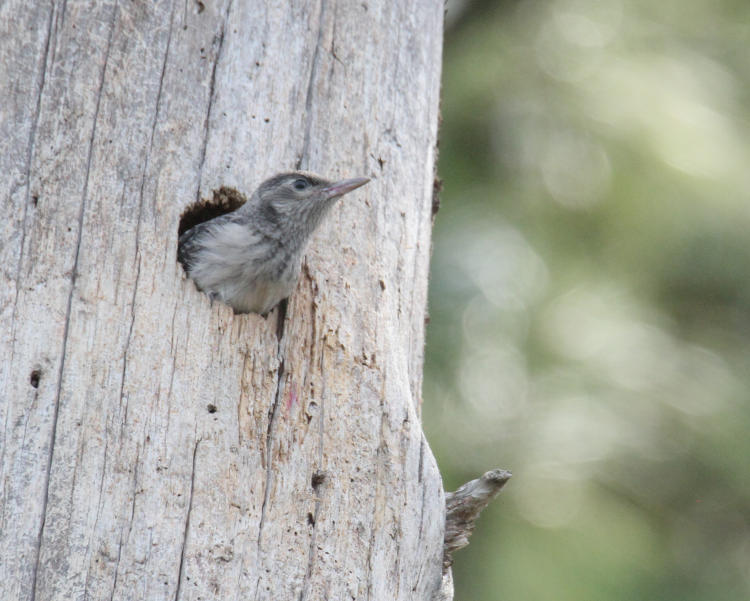
And this was the second one, four hours and 21 minutes later; it would bail within the next half-hour. This was more time spent on the pursuit than I’d anticipated, and as I said, I started packing up myself at least twice before being induced to wait just a little bit longer. The entire time, I was standing behind the tripod out in the water, save for five minutes when I got out to take a leak. I take credit for the patience, but the timing was still a matter of luck, and having free time to take advantage of that helped a lot.
All of this started from a casual comment in a post earlier this year, and played out with more luck and success than I’m used to, while expanding my video stock by a ridiculous amount as well. I’m pleased, and now feel more like I’ve put in the effort of a serious photographer (whatever that is.)




















































